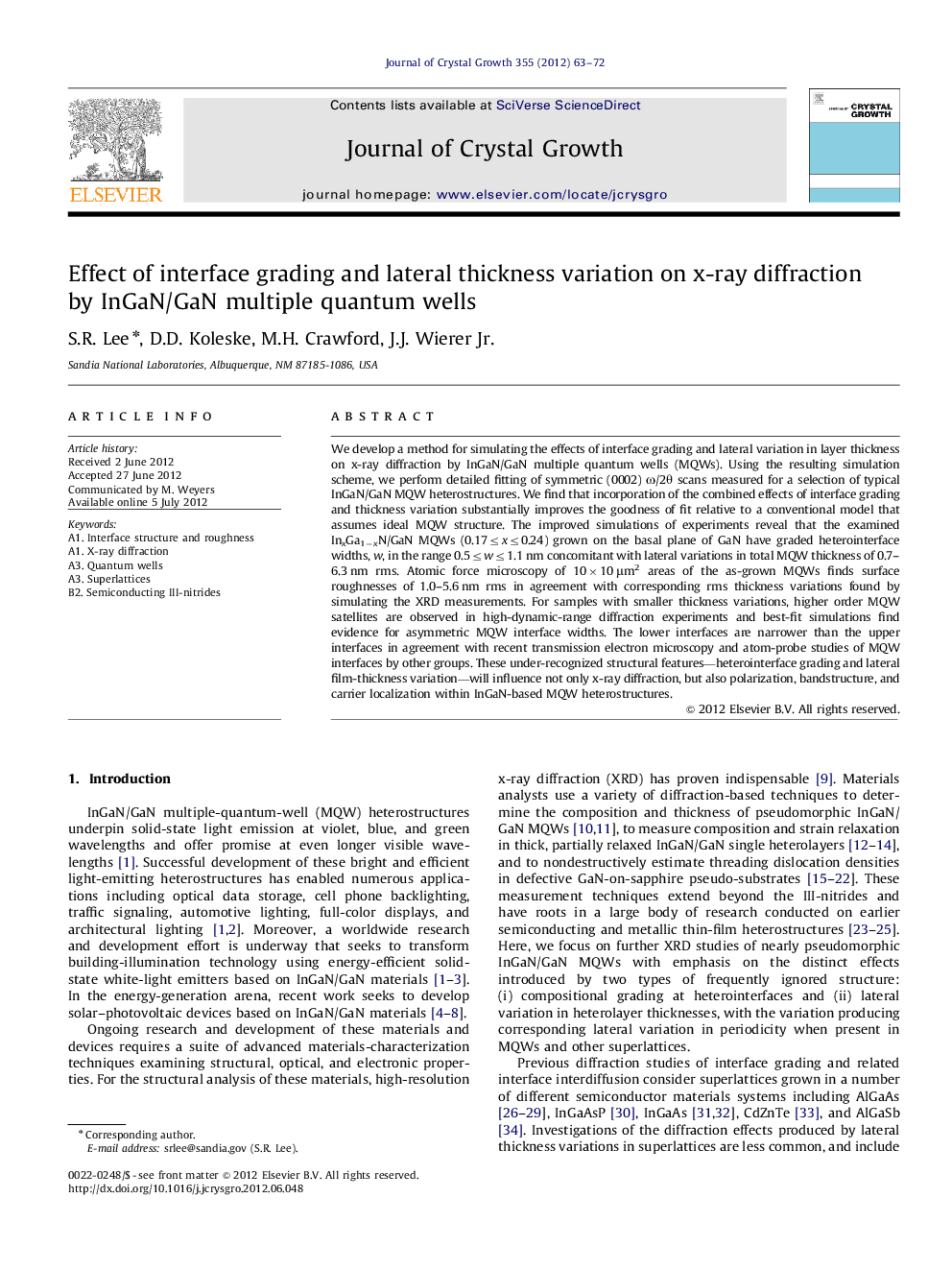| کد مقاله | کد نشریه | سال انتشار | مقاله انگلیسی | نسخه تمام متن |
|---|---|---|---|---|
| 1791697 | 1023617 | 2012 | 10 صفحه PDF | دانلود رایگان |

We develop a method for simulating the effects of interface grading and lateral variation in layer thickness on x-ray diffraction by InGaN/GaN multiple quantum wells (MQWs). Using the resulting simulation scheme, we perform detailed fitting of symmetric (0002) ω/2θ scans measured for a selection of typical InGaN/GaN MQW heterostructures. We find that incorporation of the combined effects of interface grading and thickness variation substantially improves the goodness of fit relative to a conventional model that assumes ideal MQW structure. The improved simulations of experiments reveal that the examined InxGa1−xN/GaN MQWs (0.17≤x≤0.24) grown on the basal plane of GaN have graded heterointerface widths, w, in the range 0.5≤w≤1.1 nm concomitant with lateral variations in total MQW thickness of 0.7–6.3 nm rms. Atomic force microscopy of 10×10 μm2 areas of the as-grown MQWs finds surface roughnesses of 1.0–5.6 nm rms in agreement with corresponding rms thickness variations found by simulating the XRD measurements. For samples with smaller thickness variations, higher order MQW satellites are observed in high-dynamic-range diffraction experiments and best-fit simulations find evidence for asymmetric MQW interface widths. The lower interfaces are narrower than the upper interfaces in agreement with recent transmission electron microscopy and atom-probe studies of MQW interfaces by other groups. These under-recognized structural features—heterointerface grading and lateral film-thickness variation—will influence not only x-ray diffraction, but also polarization, bandstructure, and carrier localization within InGaN-based MQW heterostructures.
► An advanced model of diffraction (XRD) by InGaN quantum wells (MQWs) is developed.
► Combined effects of interface grading and layer-thickness variations are examined.
► When fitting experiments, inclusion of these effects improves simulation fidelity.
► We find interface widths of 0.5–1.1 nm and thickness variations of 0.7–6.3 nm rms.
► Atomic force microscopy surface roughnesses agree with XRD thickness variations.
Journal: Journal of Crystal Growth - Volume 355, Issue 1, 15 September 2012, Pages 63–72